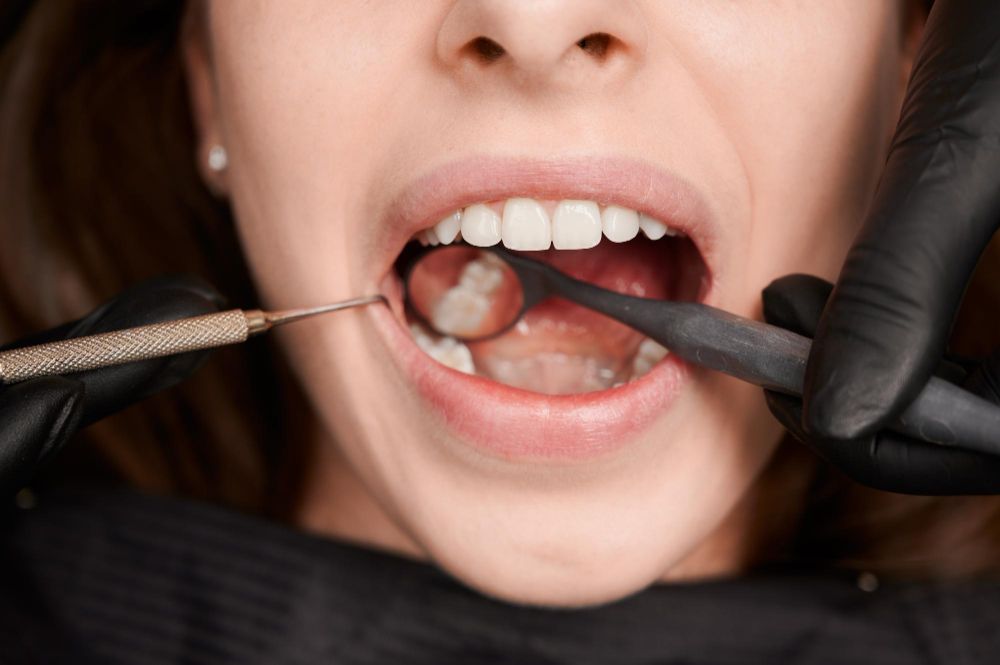Introduction:
Cavities, also known as dental caries, are a dental health issue that affects people of all ages. Despite their prevalence, there are many misconceptions and myths surrounding cavities and their prevention and treatment. This blog aims to debunk some of the most common misconceptions about cavities and provide accurate information and advice to help you maintain good oral health.
Myth #1: Cavities only affect children.
Reality: While tooth decay is common in children, cavities can affect people of all ages. In fact, older adults are at an increased risk of developing cavities due to age-related changes in the mouth, such as reduced saliva production and gum recession. Additionally, dietary habits and oral hygiene practices can impact the development of cavities in all age groups.

Myth #2: Only sugary foods and drinks cause cavities.
Reality: While consuming sugary foods and drinks can increase your risk of developing cavities, they are not the only cause. Cavities are actually caused by the bacteria in dental plaque, which produce acids that erode the enamel of teeth. This can happen after consuming any kind of carbohydrate, not just sugar. Additionally, factors like dry mouth, frequent snacking, and poor oral hygiene can also increase your risk of developing cavities.
Myth #3: If there’s no pain, there’s no cavity.
Reality: Cavities do not always cause pain or discomfort, especially in their early stages. In fact, some people may not even realize they have cavities until they see a dentist for a routine checkup. This is why regular dental checkups are important in preventing and diagnosing cavities. Additionally, some cavities may develop in areas that are not easily visible or accessible, such as between teeth, making them harder to detect without professional dental exams and x-rays.
Myth #4: Cavities don’t need to be treated if they don’t hurt.
Reality: Even if a cavity is not causing pain or discomfort, it still needs to be treated in order to prevent it from worsening and causing more serious dental issues. If left untreated, a cavity can grow larger and potentially infect the tooth’s pulp, leading to the need for a root canal or even tooth extraction. Additionally, untreated cavities can spread to other teeth or adjacent areas of the mouth, increasing the risk of further dental and oral health issues.
Myth #5: Brushing and flossing can’t reverse cavities.
Reality: While brushing and flossing cannot reverse existing cavities, they can help
continue this blog
prevent new ones from forming and slow down the progression of existing cavities. Brushing twice a day with fluoride toothpaste and flossing daily can help remove plaque and food particles from teeth and gums, reducing the amount of acid produced by bacteria in dental plaque. Additionally, using an antiseptic mouthwash can help kill bacteria in the mouth and reduce the risk of cavities.
Myth #6: Fillings and other dental treatments can make cavities worse.
Reality: Dental treatments like fillings, crowns, and root canals are designed to remove decayed or damaged tooth tissue and restore the functionality and appearance of teeth. While they may cause some discomfort or sensitivity initially, they are not known to make cavities worse. In fact, failing to treat cavities can lead to more extensive and costly dental procedures down the line. Regular checkups with a dentist can help catch cavities early and prevent the need for more invasive treatments.
Myth #7: Only people with poor oral hygiene get cavities.
Reality: While poor oral hygiene can increase your risk of developing cavities, it is not the only factor. Genetics, diet, and medical conditions like dry mouth can also impact the development of cavities. Additionally, certain lifestyle habits like smoking or drinking alcohol can increase the risk of cavities and other oral health issues. Regardless of your oral hygiene habits, it’s important to see a dentist regularly and practice good oral hygiene to maintain good dental and oral health.

Myth #8: Only sweet drinks like soda cause cavities.
Reality: While sugary drinks like soda can definitely contribute to the formation of cavities, other drinks like fruit juice, sports drinks, and even coffee or tea with added sugar can also be culprits. Additionally, acidic drinks like citrus juices or energy drinks can weaken tooth enamel and make teeth more susceptible to decay.
Myth #9: Fluoride is dangerous and should be avoided.
Reality: Fluoride is a mineral that can help strengthen tooth enamel and prevent cavities. While excessive amounts of fluoride can cause dental fluorosis, a condition that affects the appearance of teeth, the optimal amount of fluoride in drinking water and toothpaste is considered safe and effective for preventing cavities. In fact, many dental professionals recommend fluoride treatments for children and adults who are at high risk of developing cavities.
Myth #10: Mouthwash can replace brushing and flossing in preventing cavities.
Reality: While mouthwash can help kill bacteria in the mouth and freshen breath, it is not a replacement for brushing and flossing in preventing cavities. Plaque and food particles need to be physically removed from teeth and gums in order to prevent acid buildup and decay. Mouthwash can be used in addition to regular brushing and flossing, but it should not be used as a substitute.
Conclusion:
Cavities are a common dental health issue that can affect people of all ages. However, there are many misconceptions and myths surrounding cavities and their prevention and treatment. It’s important to understand the facts about cavities and to practice good oral hygiene habits, such as brushing twice a day with fluoride toothpaste, flossing daily, and seeing a dentist regularly for checkups and cleanings. By taking care of your teeth and gums and avoiding common misconceptions about cavities, you can maintain good oral health and prevent serious dental issues.


